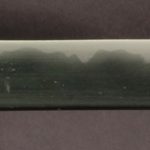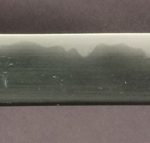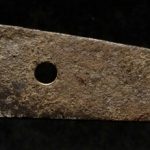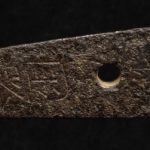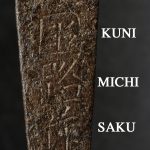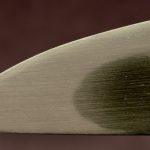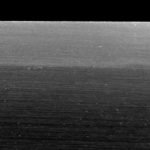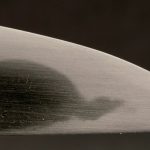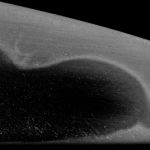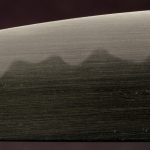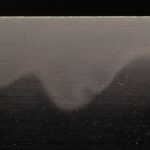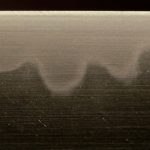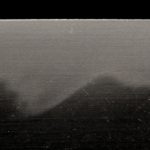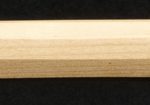KUNIMICHI / TANTO / $1800
KUNIMICHI
MEI: KUNIMICHI SAKU
DATE: NONE
NAGASA: 26.67cm (10.5″)
OVERALL: 37.15cm (14.625″)
MIHABA: 2.7cm (1.0625″)
KASANE: 0.63cm (0.25″)
SORI: SLIGHT UCHIZORI
NAKAGO: UBU
MEKUGI ANA: ONE
YASURIME: INDISTINGUISHABLE
MUNE: IORI
HADA: MUJI
HAMON: MIDARE
BOSHI: KO-MARU
HORIMONO OMOTE: NONE
HORIMONO URA: NONE
HABAKI: WOOD
SHIRASAYA
KUNIMICHI
Tanto signed Kunimichi Saku. The Michi character used in this mei (国路) would point to one of the Yamashiro Kunimichi smiths. There are three generations listed as working in the Shinto period from around 1609-1764. The Shodai was a student of both Iga no Kami Kinmichi as well as, Horikawa Kunihiro and was known as one of the best students of Kunihiro. He worked for over 50 years with his last dated work being 1662.
While nice, this tanto does not exhibit the quality of work one would expect from a top student of Horikawa Kunihiro, therefore I would rule out the shodai immediately.
There is not a lot of information on the two later generations (See Below). Looking at the known mei for these smiths, only the Sandai or third generation was documented as signing sanji-mei or three-character mei as seen on this tanto.
From Sesko’s, Swordsmiths A-Z:
KUNIMICHI (国路), (NIDAI) Kanbun (寛文, 1661-1673), Yamashiro – “Dewa no Daijō Fujiwara Kunimichi” (出羽大掾 藤原国路), due to the long active period of Kunimichi, a second generation came into play who is listed somewhat later than Kunimichi whose last known blade is from Meireki three (明暦, 1657)
KUNIMICHI (国路), (SANDAI) Hōreki (宝暦, 1751-1764), Yamashiro – “Kunimichi saku” (国路作), “Dewa no Daijō Fujiwara Kunimichi” (出羽大掾藤原国路), later smith of the Kunimichi line
While nothing is set in stone, this is most likely the work of the Sandai Kunimichi.
Not sure where the shirasaya came from but it is obviously homemade. I guess it didn’t fit properly so there is a copper shim added.
Looking for a genuine Nihonto cheap, this is your lucky day.
Price: $700 plus S/H
